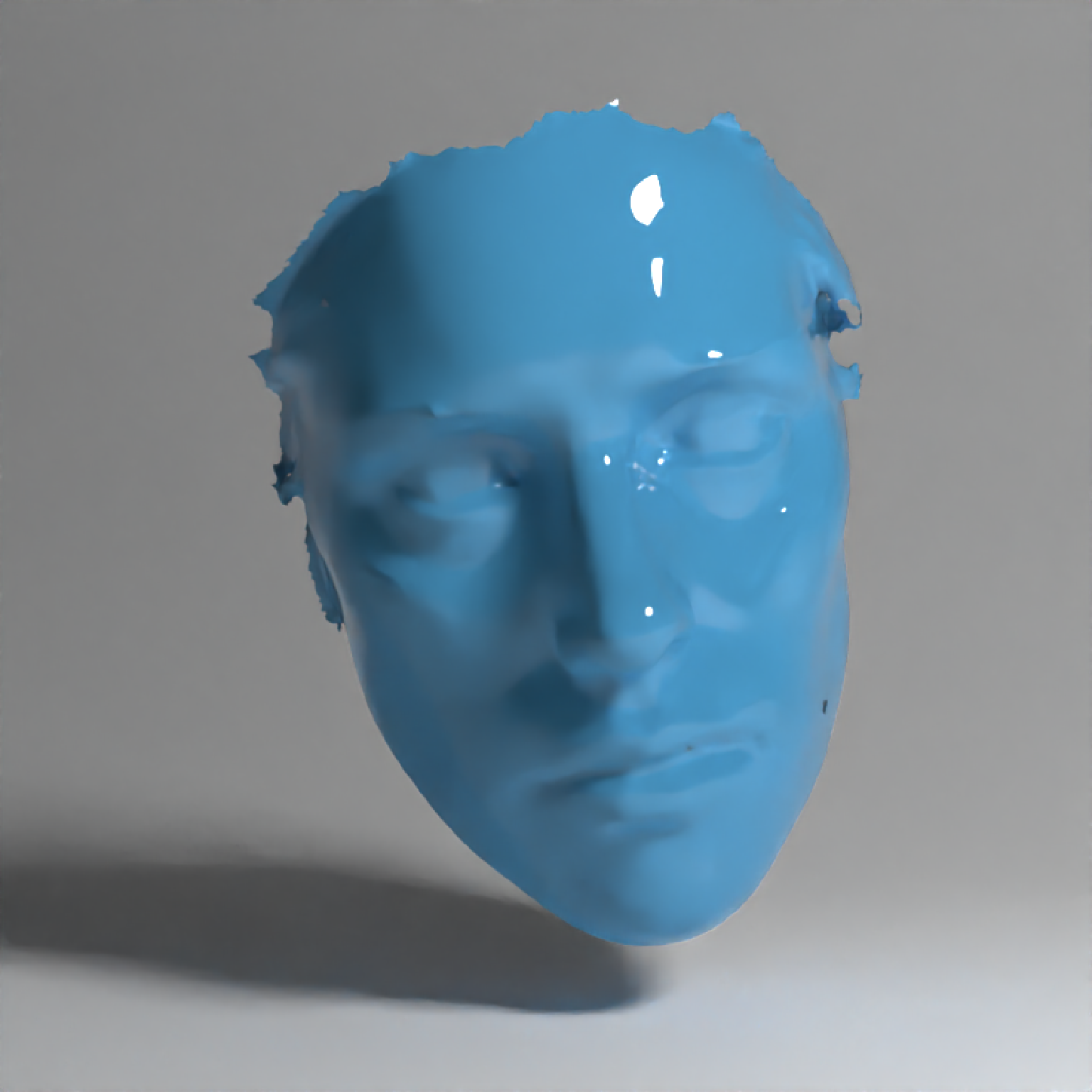Load an `mesh3d` (or `shapelist3d`) object, as specified in the `rgl` package.
mesh3d_model(
mesh,
x = 0,
y = 0,
z = 0,
swap_yz = FALSE,
reverse = FALSE,
subdivision_levels = 1,
verbose = FALSE,
displacement_texture = "",
displacement_intensity = 1,
displacement_vector = FALSE,
recalculate_normals = FALSE,
override_material = FALSE,
material = diffuse(),
angle = c(0, 0, 0),
order_rotation = c(1, 2, 3),
flipped = FALSE,
scale = c(1, 1, 1)
)Arguments
- mesh
A `mesh3d` or `shapelist3d` object. Pulls the vertex, index, texture coordinates, normals, and material information. If the material references an image texture, the `mesh$material$texture` argument should be set to the image filename. The `mesh3d` format only supports one image texture per mesh. All quads will be triangulated.
- x
Default `0`. x-coordinate to offset the model.
- y
Default `0`. y-coordinate to offset the model.
- z
Default `0`. z-coordinate to offset the model.
- swap_yz
Default `FALSE`. Swap the Y and Z coordinates.
- reverse
Default `FALSE`. Reverse the orientation of the indices, flipping their normals.
- subdivision_levels
Default `1`. Number of Loop subdivisions to be applied to the mesh.
- verbose
Default `FALSE`. If `TRUE`, prints information about the mesh to the console.
- displacement_texture
Default `""`. File path to the displacement texture. This texture is used to displace the vertices of the mesh based on the texture's pixel values.
- displacement_intensity
Default `1`. Intensity of the displacement effect. Higher values result in greater displacement.
- displacement_vector
Default `FALSE`. Whether to use vector displacement. If `TRUE`, the displacement texture is interpreted as providing a 3D displacement vector. Otherwise, the texture is interpreted as providing a scalar displacement.
- recalculate_normals
Default `FALSE`. Whether to recalculate vertex normals based on the connecting face orientations. This can be used to compute normals for meshes lacking them or to calculate new normals after a displacement map has been applied to the mesh.
- override_material
Default `FALSE`. If `TRUE`, overrides the material specified in the `mesh3d` object with the one specified in `material`.
- material
Default
diffuse.The material, called from one of the material functionsdiffuse,metal, ordielectric.- angle
Default `c(0, 0, 0)`. Angle of rotation around the x, y, and z axes, applied in the order specified in `order_rotation`.
- order_rotation
Default `c(1, 2, 3)`. The order to apply the rotations, referring to "x", "y", and "z".
- flipped
Default `FALSE`. Whether to flip the normals.
- scale
Default `c(1, 1, 1)`. Scale transformation in the x, y, and z directions. If this is a single value, number, the object will be scaled uniformly. Note: emissive objects may not currently function correctly when scaled.
Value
Single row of a tibble describing the mesh3d model in the scene.
Examples
#Load a mesh3d object (from the Rvcg) and render it:
if(run_documentation()) {
library(Rvcg)
data(humface)
generate_studio() %>%
add_object(mesh3d_model(humface,y=-0.3,x=0,z=0,
material=glossy(color="dodgerblue4"), scale = 1/70)) %>%
add_object(sphere(y=5,x=5,z=5,material=light(intensity=50))) %>%
render_scene(samples=16,width=800,height=800,
lookat = c(0,0.5,1), aperture=0.0)
}
